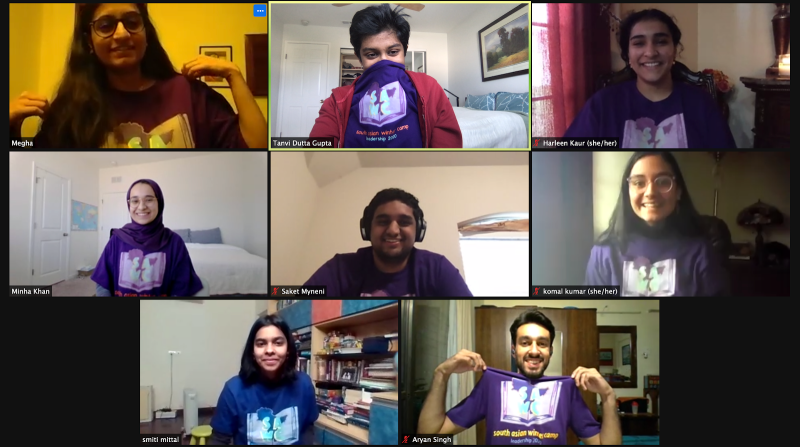After months of meticulous planning, a group of Stanford students spent winter break not taking classes, but teaching them. The South Asian Winter Camp (SAWC), created by a team of undergraduates, enrolled 400 students in December for a wide variety of courses.
Students took part in a variety of free classes and mentorship activities, all accompanied by rigorous design and research. The organization was launched by Megha Parwani ’22 and Minha Khan ’21, who were concerned about education in South Asia, especially as it relates to COVID-19.
While there is much that unites South Asia, there is also much that divides it, ranging from tensions between India and Pakistan to conflict in Sri Lanka. SAWC attracted students from five countries (Pakistan, India, Bangladesh, Nepal and Sri Lanka) who spoke 29 different languages. These students were anywhere from 14 to 19 years old. College students and young professionals from across the world were recruited to serve as mentors and teachers.
While designing a program for such a diverse group of students posed challenges at times, SAWC members were motivated to create a welcoming environment with meaningful conversations.
“I think it’s about breaking down those stereotypes, those assumptions and having that real contact with people of a different community across the border,” said SAWC Co-Director of Mentorship Komal Kumar ’22.
Student leaders said they saw the power of connection first-hand. Aryan Singh ’22, SAWC co-director of curriculum, said when he visited one of the SAWC class meetings on the conflict in the region and partition, co-taught by a Pakistani student and an Indian student, he was impressed by how open-minded and motivated the students were.
According to Khan, students said, “I’m here to learn. Teach me what my country is doing wrong, teach me why I’ve been told your country is bad.”
At its core, the camp was driven by passion to serve South Asian students. When COVID-19 first hit, Parwani, who is also a managing editor of The Daily’s opinions section, and Khan saw the impact of school closures on the South Asian children around them.
At home in Pakistan, Khan lives with her 10-year-old cousin. Although her cousin always loved going to school, she lost her motivation once that academic environment was cut away and wanted to spend the day on her phone instead. As Khan and Parwani started thinking more and more about the mass number of students in South Asia sitting at home, away from learning, the more they felt the need to take action.
After creating a leadership team of nine Stanford students, the group worked together to design the program and create a teaching team. Months of work were put into creating a beneficial environment for students.
Rigor was key to the program’s success. The team used focus groups to determine how to create the most beneficial program for students, and the heads of both curriculum and mentorship conducted in-depth literature reviews. Potential teachers were interviewed and then put through SAWC’s own training with discussions on subjects such as serving multilingual classrooms and student-centered design.
When interviewing teachers, the focus was on the commitment to the service. According to Khan, potential teachers were asked, “Why are you here, what can you offer and how can you come into service?”
Then it was time to actually run the program. In all, the camp involved 33 teachers and approximately 107 mentors, in addition to its core leadership.
Though camp is over, the work of the leadership team has not. They hope to create resources for schools in South Asia and possibly even produce a paper for publication, according to Khan. By producing resources and research, SAWC hopes to help improve education in the region beyond the program itself.
The legacy for SAWC is still uncertain as the team debriefs and decides on next steps. There are some aspects the team hopes to improve: Kumar wants to further diversify SAWC’s teaching team, and Khan is thinking about how best to serve students in their native languages. But, the most consistent takeaway from SAWC members seems to be their pride in the program.
“I really hope this continues on maybe even after I graduate,” Kumar said.
In a previous version of the article, some information given by Minha Khan was misattributed to Komal Kumar. The Daily regrets this error.
Contact Kirsten Mettler at kmettler ‘at’ stanford.edu.
